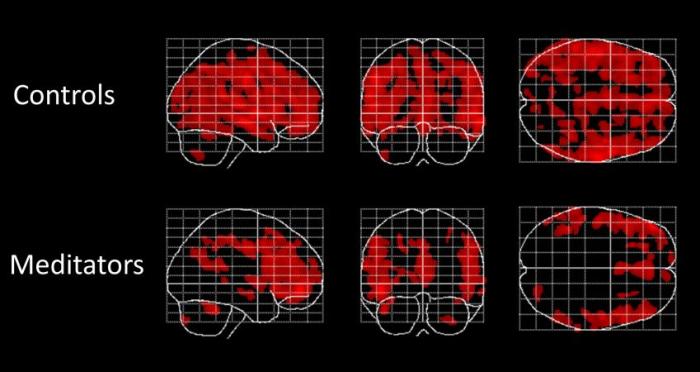Insurance companies aren't known for taking risks on unproven methods. So when Aetna CEO Mark Bertolini -- who had personal experience with the healing benefits of yoga and meditation -- wanted to spread the practices to Aetna's employees, he looked for data. As David Gelles describes in the New York Times' article,
"At Aetna, A CEO's Management by Mantra," Aetna did its own research.
More than 13,000 Aetna employees -- just over a quarter of the company's 50,000 employees -- have taken the free yoga and meditation classes, and Aetna offers those programs to businesses that contract with it for health insurance.
Those who have taken part report, on average, a 28 percent reduction in their
stress levels, a 20 percent improvement in sleep quality, and a 19
percent reduction in pain. (The study relied on self-reporting, but also checked heart rate and cortisol levels, which backed up the self-reports.) They also become more effective on the job,
gaining an average of 62 minutes per week of productivity each, which
Aetna estimates is worth $3,000 per employee per year. Additionally, Aetna's heath care costs fell after it introduced meditation and yoga classes in 2012.
Aetna's not alone in offering meditation classes -- Google, General Mills, and Coca-Cola also have programs.
Janice Maturano, who developed General Mills' programs, now consults with other companies as demand for such programs has increased.
Should meditation become a standard part of the workday? Given the importance of motivation or intention to progress in meditation, what happens if meditators don't have a choice about being there? Will it reduce stress if people are stressed about having to go? Will mindfulness techniques, which encourage people to connect with and accept things as they are, discourage creative thinking or encourage people to accept unfair or abusive treatment?
In
The Harvard Business Review, psychiatrist
David Brendel questions whether the rush to mindfulness is being done, well, mindlessly. Brendel says some of his clients use mindfulness to avoid critical thinking about difficult situations. "I’ve worked with clients who, instead of rationally thinking through a
career challenge or ethical dilemma, prefer to disconnect from their
challenges and retreat into a meditative mindset. The issue here is that
some problems require more thinking, not less."
It's also a problem, he says, when companies force mindfulness sessions on employees.
As Brendel writes:
Mindfulness practices should be used to enhance our rational and ethical
thinking processes, not limit or displace them. ... At its very core, mindfulness culture will be a huge step
forward for Western cultures if it stays focused on creating
opportunities for individuals to discover their own personalized
strategies for taming anxieties, managing stress, optimizing work
performance, and reaching genuine happiness and fulfillment.


